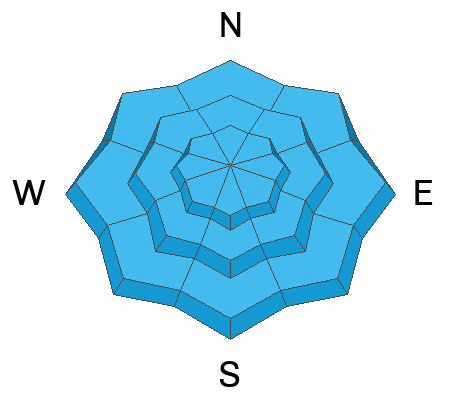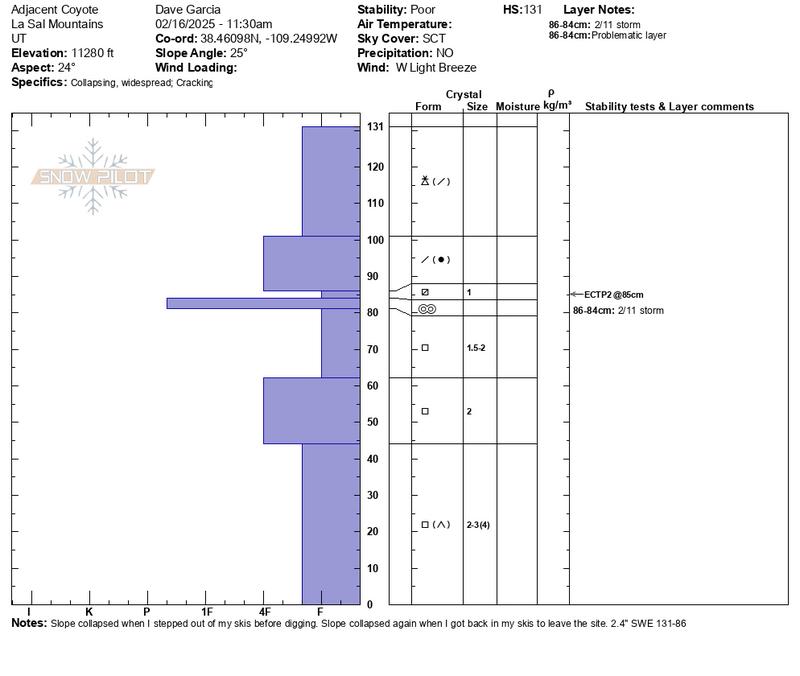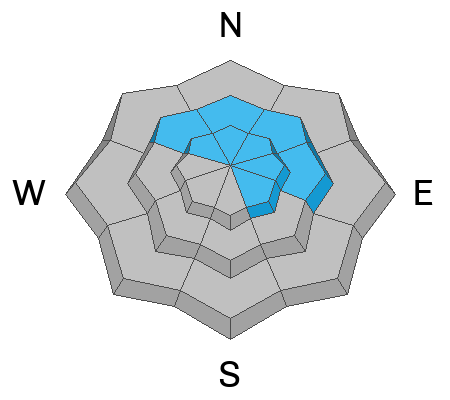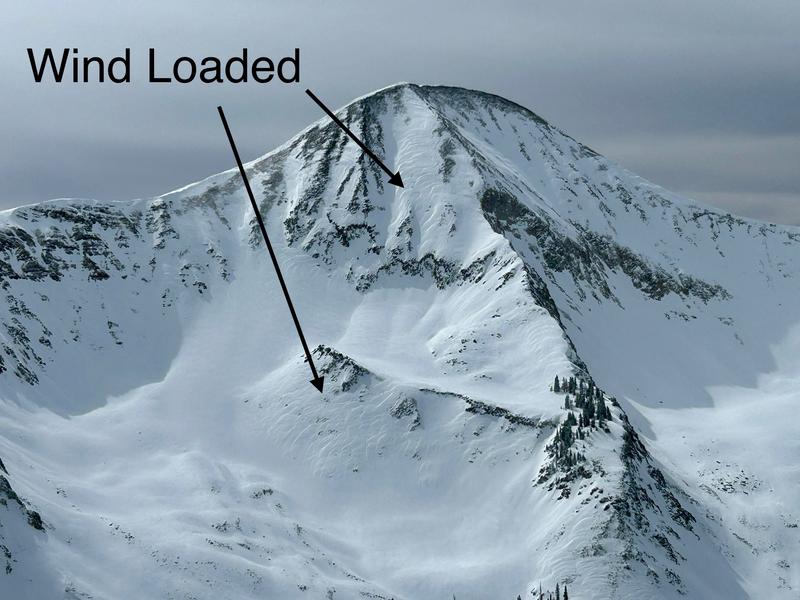Forecast for the Moab Area Mountains

Issued by Eric Trenbeath on
Tuesday morning, February 18, 2025
Tuesday morning, February 18, 2025
The avalanche danger remains CONSIDERABLE on steep slopes near and above treeline that face W-N-SE, and on all slopes facing the north half of the compass below. Deep and deadly human-triggered avalanches failing on buried persistent weak layers are LIKELY. Avalanches can be triggered remotely or from a distance. Stay off of and out from under slopes steeper than 30 degrees.
All other terrain has a MODERATE danger and human-triggered avalanches failing on a buried persistent weak layer are POSSIBLE.
Conservative decision-making remains essential for backcountry travel today.
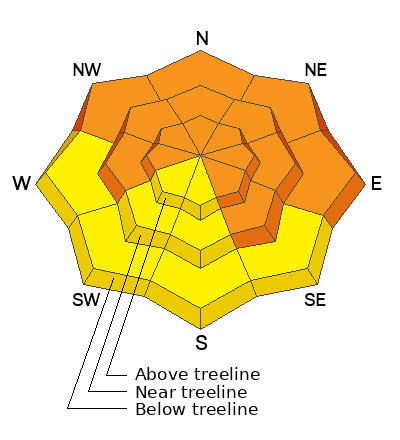
Low
Moderate
Considerable
High
Extreme
Learn how to read the forecast here


